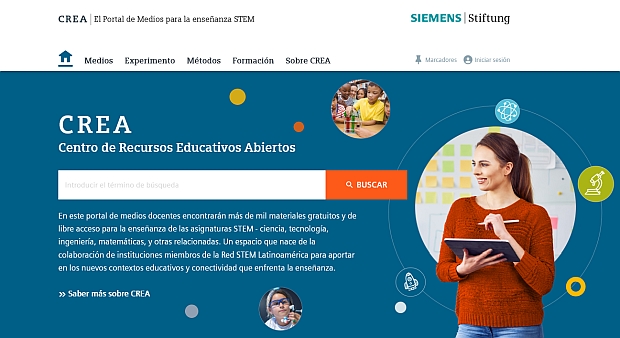A1 Electric current from solar cells (teacher instructions)
Text
Experimentation instructions for Experimento | 10+:
Background information on the content and practical information on conducting the experiment "Electric current from solar cells – We build a dye-sensitized solar cell". This experiment comprises three subexperiments.
Medientyp:
Text
Letzte Aktualisierung:
20.11.2018
Lizenz:

Dieses Medium steht unter einer CC BY-SA 4.0 international Lizenz.
Was bedeutet das?
So verweisen Sie auf das Medium

Dieses Medium steht unter einer CC BY-SA 4.0 international Lizenz.
Was bedeutet das?
So verweisen Sie auf das Medium
Medienpaket:
Beschreibung:
The experiment comprises three subexperiments:
• Building a dye-sensitized solar cell
• Power output of the dye-sensitized solar cell at different light intensities
• Higher voltages through several dye-sensitized solar cells
This experiment is particularly suitable for an introduction to solar cells, since unlike experiments with premade silicon cells, students can experience hands-on the working principle behind solar cells. With the experiments in chemistry class, students can verify their knowledge from the Bohr model of the atom (electron energy levels and excitation) and also apply their knowledge of redox chemistry. In biology class, the experiments with the dye-sensitized solar cell can best be used to introduce or illustrate the topic of photosynthesis. The experiments are not really difficult, but require attention to detail. Experienced students can easily conduct all three subexperiments in the allowed time of approx. 45 min. For inexperienced students, teachers should schedule more time or possibly skip subexperiments 2 and 3. The experiment also lends itself very well to use during a project day on renewable energy.
Notes:
• Observe the safety information in the instructions as well as the applicable safety guidelines for your school.
• All materials mentioned in the instructions will have to be purchased directly from commercial sources.
• Building a dye-sensitized solar cell
• Power output of the dye-sensitized solar cell at different light intensities
• Higher voltages through several dye-sensitized solar cells
This experiment is particularly suitable for an introduction to solar cells, since unlike experiments with premade silicon cells, students can experience hands-on the working principle behind solar cells. With the experiments in chemistry class, students can verify their knowledge from the Bohr model of the atom (electron energy levels and excitation) and also apply their knowledge of redox chemistry. In biology class, the experiments with the dye-sensitized solar cell can best be used to introduce or illustrate the topic of photosynthesis. The experiments are not really difficult, but require attention to detail. Experienced students can easily conduct all three subexperiments in the allowed time of approx. 45 min. For inexperienced students, teachers should schedule more time or possibly skip subexperiments 2 and 3. The experiment also lends itself very well to use during a project day on renewable energy.
Notes:
• Observe the safety information in the instructions as well as the applicable safety guidelines for your school.
• All materials mentioned in the instructions will have to be purchased directly from commercial sources.
Lernobjekttyp:
Experiment
Fächer:
Biology; Chemistry; Physics; Technology
Klassenstufen:
Grade 5 to 6; Grade 7 to 9; Grade 10 to 13
Schultypen:
Middle/high school
Stichworte:
Electrical circuit; Energy; Semiconductor; Solar energy
Bibliographie:
Siemens Stiftung Media Portal
Urheber/Produzent:
Dieter Arnold, Burkhard Apell for Siemens Stiftung
Rechteinhaber:
© Siemens Stiftung 2015



